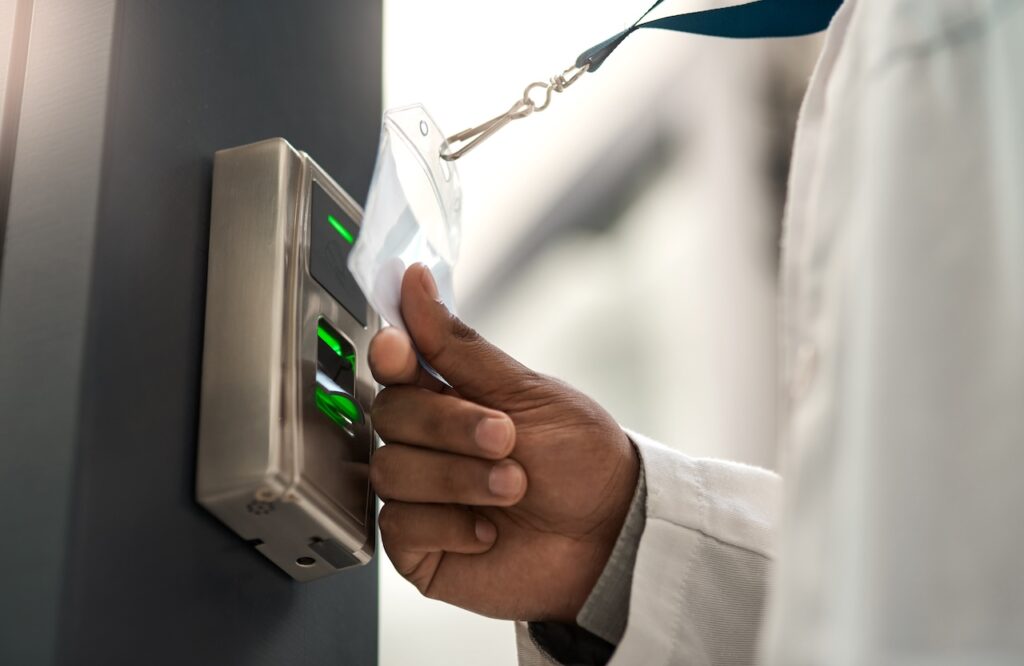Security is at the forefront of every business’s priorities, and when it comes to protecting physical assets, employees, and sensitive data, physical access control systems are a must. Whether you’re running a small office or managing multiple facilities, implementing these systems can significantly enhance your security strategy while improving operational efficiency.
This guide will walk you through what you need to know about physical access control systems, their components, how they function, and the features to look for when choosing the right solution for your business.
What is a Physical Access Control System?
A physical access control system (PACS) is a security solution that regulates and monitors entry into physical spaces such as buildings, rooms, or restricted areas. Instead of relying on traditional locks and keys, these systems use advanced credentials like electronic keycards, biometrics, or mobile apps to grant or deny access.
Physical access control ensures that only authorized individuals can enter designated areas, providing businesses with heightened security and peace of mind. These systems also generate detailed records of access attempts, creating transparency and accountability in your operation.
Components of a Physical Access Control System
Physical access control systems comprise several components working together to streamline security operations. Here are some elements that might be included in a PACS setup:
- Access Control Devices: These include key cards, biometric scanners, or PIN pads that regulate who can enter specific areas and when.
- Video Security Systems: Surveillance cameras monitor and record activity, enabling real-time observation and playback for added security and incident investigation.
- Alarm Systems: Intrusion alarms detect unauthorized access or security breaches, providing immediate alerts to ensure swift action.
- Control Panels: The brain of the system, where decisions are made to approve or deny access based on the credentials provided.
- Access Control Server: A centralized database (cloud-based or on-premise) that stores user data, access privileges, and activity logs.
- Intercom Systems: Intercoms facilitate secure communication between personnel at access points, allowing for identity verification before granting entry.
- Vape Sensors: These specialized sensors detect vaping or smoking in restricted areas, ensuring compliance with facility policies and enhancing air quality.
Fun fact: 60% of businesses still use ID badges for access control, while technologies like biometrics are rapidly advancing.
The Benefits of Physical Access Control
Naturally, the most important benefit is enhanced security by ensuring that only authorized individuals can enter specific areas, reducing the risk of unauthorized access. It provides businesses with greater control over who can access sensitive spaces, improving overall safety and accountability.
Additionally, it streamlines operations by eliminating the need for outdated key systems and offering modern solutions like key cards or biometric entry for convenience and efficiency. With physical access control, organizations can better protect their assets, employees, and information while maintaining a seamless flow of operations that is compliant with safety regulations.
How Do Physical Access Control Systems Work?
The process is simple but highly effective. Here’s how a typical interaction unfolds when someone attempts to access a secured area:
- User Authentication: An individual provides their credential to a reader at an access point (e.g., scanning a keycard or using a biometric scanner).
- Credential Verification: The reader sends the credential information to the control panel, which cross-references it with the database.
- Access Decision: If the credential matches the authorization in the database, access is granted, and the door unlocks. If not, access is denied.
- Activity Logging: Every attempt—successful or unsuccessful—is recorded for reporting and analysis.
Common Authentication Methods
Businesses have various authentication methods to choose from, depending on their specific security needs. Keycards and fobs are popular due to their ease of use and scalability, though they come with the risk of being lost or duplicated. Mobile apps offer a more flexible option, providing the convenience of instant updates to user permissions.
For the highest level of security, biometrics such as fingerprint or facial recognition are increasingly preferred. Since these identifiers are unique to each person, biometrics eliminate the risks associated with lost or stolen credentials, making them a reliable and secure choice for businesses.
Key Features to Look For in a Physical Access Control System
When selecting a system for your own business, keep these features in mind:
- Customizable Security Levels: Adjust access permissions for individuals or groups.
- Remote Management: Manage, update, or monitor access controls from anywhere via cloud integration.
- Scalability: Ensure the system can grow with your business, accommodating new sites or users.
- Audit Logs: Record every access attempt to track activity and support compliance audits.
- Emergency Lockdown Capability: Quickly secure your building during emergencies.
- User-Friendly Interface: A simple management dashboard for administrators to manage entry points, users, and policies.
Partner with XIT Solutions for Advanced Access Control
At XIT Solutions, we specialize in providing business access control systems tailored to meet the unique needs of your organization. You’ll gain access to expertly designed and managed security systems that include everything from secure access management to environmental monitoring solutions.
Ready to enhance your security strategy? Contact XIT Solutions today.

